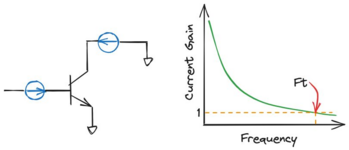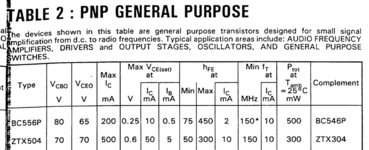mygoggie
Administrator
If this is a thriller @Family_Dog then you need to see some of the investigations I have done! I actually love this and am learning so much!
I spent some time on Research Gate and found this interesting graph showing the transition frequency fT of a Bipolar transistor. It shows that the applied voltage has almost no influence. Now I have no idea if this trend can be applied in general to all bipolar transistors?

I spent some time on Research Gate and found this interesting graph showing the transition frequency fT of a Bipolar transistor. It shows that the applied voltage has almost no influence. Now I have no idea if this trend can be applied in general to all bipolar transistors?





